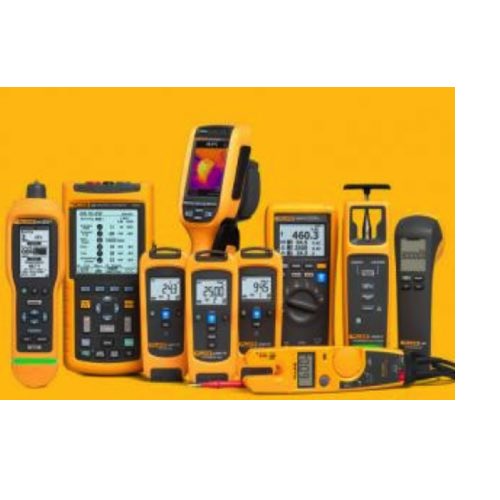Fluke Test Equipment

Test equipment from Fluke is known for its precision measurement, durability, and reliability across a spectrum of industries, including electrical, industrial, and medical applications. Fluke Corporation, a global leader in test-and-measure technology, offers a diverse array of instruments—everything from digital multimeters to power quality analyzers—that are used under the most demanding conditions by professionals who work with energized circuits. These rugged test tools and Fluke industrial equipment are built to withstand harsh conditions and deliver accurate readings for not just AC voltage and DC voltage, but also a number of critical electrical parameters whose precise measurement is essential for the kind of manufacturing and calibration processes where these tools find their most frequent application.
The commitment by Fluke to innovate goes beyond just electrical testing. It encompasses a strong focus on the industrial frequency and temperature measurements; pressure monitoring; power analysis. In fact, Fluke test equipment is designed with user-friendly interfaces; high-resolution displays; and accessories that make using the equipment in the field more convenient. Fluke Corporation has a history of excellence. It is a company that is very well trusted across the world. When you purchase a solution from Fluke, you are almost guaranteed to receive a reliable piece of testing equipment that, when used properly, will enable you to complete necessary maintenance; troubleshooting; and overall optimally run your system as the user intended it to run.
More Information about Fluke Test Equipment
In specific areas, Fluke Biomedical supplies top-tier medical testing equipment, guaranteeing the precision and security of healthcare diagnostic instruments utilized in clinical environments. On another front, Fluke Networks provides network testing tools that, as part of an integrated system, ensure the availability and reliability of data distribution and connectivity systems. In the electrical and industrial engineering space, we're working with professionals who trust Fluke multimeters and portable oscilloscopes for troubleshooting and diagnostics—understandably, since these tools have the safest features and are so easy to use (and comply with such relevant standards). And then, as if they're not already dominating all the relevant industries, Fluke also offers recorders for "paperless" data logging and analysis, great for continuous monitoring tasks.
FAQs
Are clamp meters considered electrical testers?
Yes, clamp meters are considered electrical testers as they are designed to measure electrical parameters such as current, voltage, and resistance in energized circuits without direct contact.
Analog and Digital Control Signals: The Basics
Digital Signals
Digital signals are represented in either a true or false. There is no gray area with digital signals. An example of this might be a light switch. A light switch is either on or off. Another example of this might be a motor that is running or not running. Digital signals can be generated with both AC and DC circuits with varying voltages, currents and resistance. Some practical examples of using digital signals in an industrial environment might be if a pump is running or not running or a whether a valve is open or closed.
Analog Signals
Analog signals convey information in the form of a range. A light switch might be on or off as a digital signal, but a dimmer switch would be an analog signal. It can be on or off, but it can also be somewhere in between. A practical example of using analog signals in an industrial environment would be if there is a need to measure the level of a tank; whether it's full, empty or somewhere in between. Analog signals can take many different forms with some of the more common being a 4 to 20 milliamp signal or a 0 to 5 or 0 to 10 volt signal.
Communication
Communication in a device can either be sent or received. Whether that data is sent or received depends on the type of information. Is there a need to monitor the status of something? If so, an input needs to be received about that information. Is there a need to control something? If so, an output needs to be sent about what needs to occur. Receiving inputs and setting outputs are both things that can be accomplished by using both digital and analog signal types. Therefore, the signals are referred to as analog outputs (AO), analog inputs (AI), digital inputs (DI) or digital outputs (DO).

